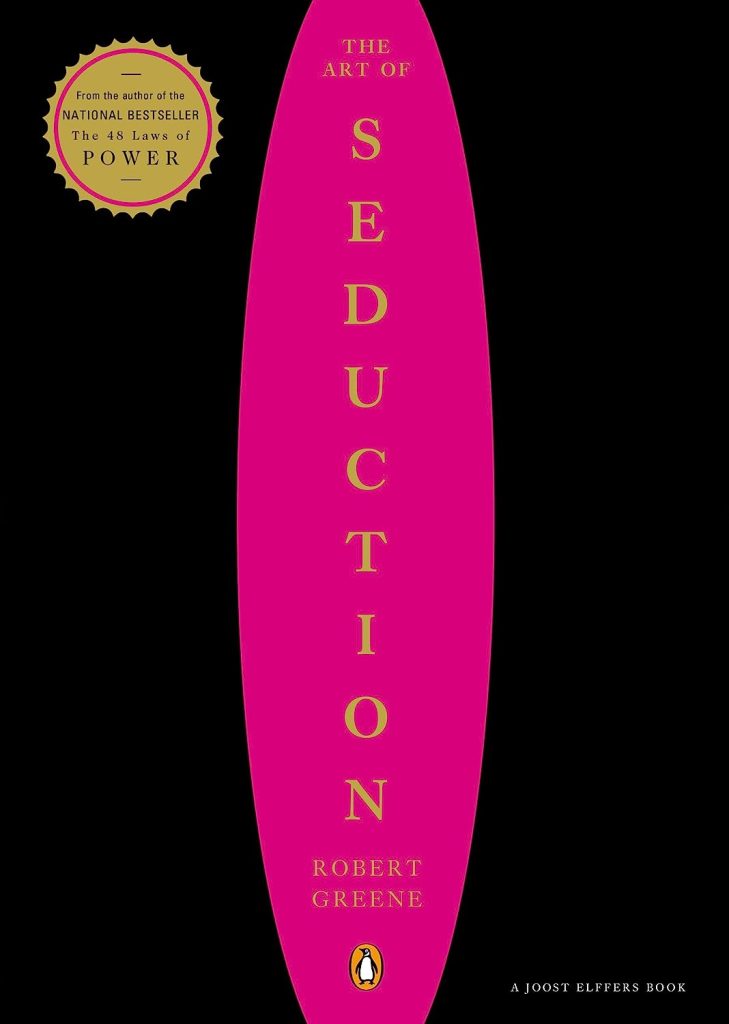“The Art of Seduction” by Robert Greene has faced bans in some communities due to its perceived promotion of manipulative and predatory behavior in relationships. Authorities argue its content can be harmful and unethical, leading to restrictions to protect individuals from potential exploitation and psychological harm.

Is The Book “The Art Of Seduction” Banned In Many Countries?
No, “The Art of Seduction” isn’t actually banned in many countries, but it has faced criticism and objections from some groups and individuals.
It’s a book that’s widely available in bookstores and online markets around the world. The book delves into various strategies and techniques for charming and influencing others, exploring the psychology behind seduction. Despite its sometimes controversial subject matter, it hasn’t faced significant censorship in most places. People can generally access and read it without legal restrictions in countries where freedom of speech is protected.
However, it’s worth noting that while the book isn’t officially banned, there may be criticisms or objections to its content from certain individuals, groups, or cultures. Some may argue that the ideas it presents promote manipulative or unethical behavior in relationships. Consequently, there might be social or moral pressure against its reading or endorsement in specific communities.
Nevertheless, “The Art of Seduction” remains a popular and influential work in the field of psychology and human behavior. Readers interested in understanding the dynamics of persuasion and interpersonal relationships can find it readily available for purchase or borrowing from libraries. So, while it may not be universally embraced, it’s generally not subject to governmental censorship in many countries, allowing individuals to explore its ideas and concepts freely.
Why The Art Of Seduction Book Is Banned?
“The Art of Seduction” has sparked controversy and faced opposition from various quarters. Let’s explore the multifaceted reasons behind the discontent.
Promotion of Manipulation:
- Critics argue that the book promotes manipulation and deceit to achieve personal gain.
- Its strategies are seen as unethical and potentially harmful to relationships.
Objectification of Individuals:
- Some readers claim that the book objectifies individuals, reducing them to mere tools for one’s personal desires.
- This objectification undermines the value of genuine human connections.
Exploitative Nature:
- The book is accused of exploiting vulnerabilities and insecurities in others for selfish ends.
- Such exploitation can lead to emotional distress and psychological harm.
Ethical Concerns:
- Many readers and scholars question the ethical framework underlying the book’s teachings.
- Some argue that the tactics and strategies outlined in the book promote manipulation and deceit in personal relationships.
- The tactics it advocates are viewed as morally questionable and manipulating others for personal gain is unethical and harmful.
Gender Stereotypes:
- Critics argue that the book perpetuates harmful gender stereotypes.
- It portrays women as passive objects of seduction and men as assertive pursuers. It reinforces outdated notions of gender roles.
Lack of Consent Emphasis:
- The book neglects to emphasize the importance of consent in interpersonal relationships.
- This omission raises concerns about the promotion of non-consensual behavior.
Potential for Abuse:
- Critics warn that the book provides a playbook for individuals with malicious intentions.
- It could empower abusers to manipulate and exploit others for their own gratification.
Impact on Vulnerable Audiences:
- There are concerns about the book’s impact on vulnerable or impressionable audiences.
- It may lead susceptible individuals to adopt harmful attitudes and behaviors in their interactions with others.
Cultural Sensitivities:
- Certain cultures and societies may find the content of “The Art of Seduction” offensive or incompatible with their values.
- This cultural clash can result in the book being banned or restricted in certain regions.
Legal Considerations:
- In some cases, the content of the book may violate laws related to harassment, coercion, or sexual misconduct.
- Legal authorities may intervene to ban or restrict access to the book to prevent legal infractions.
“The Art of Seduction” has been banned due to its perceived promotion of manipulation, objectification, and unethical behavior. Critics raise concerns about its potential to harm relationships, perpetuate harmful stereotypes, and facilitate abuse. These factors have led to its restriction in various contexts.
Is The Art Of Seduction Banned In Prison?
“The Art of Seduction” is often banned in prisons due to security concerns. Prisons worry that the tactics described in the book could be used by inmates to manipulate or harm others. The book teaches strategies for seducing and manipulating people, which could lead to problems within the tightly controlled environment of a prison. Inmates might use these tactics to gain power over others, manipulate guards, or even engage in illegal activities. While some may argue for intellectual freedom, prisons prioritize security above all else, leading to the ban of books like “The Art of Seduction.”
However, not all prisons have the same banned book lists, and policies can vary widely. Some facilities might allow it if it’s deemed educational or if there’s no explicit rule against it. Overall, the decision to ban such a book would likely be based on concerns about its potential impact on inmate behavior and institutional safety.
What Is The Biggest Reason Books Are Banned?
The presence of sexual content is undeniably one of the most significant reasons for book banning. It elicits controversy due to deeply ingrained cultural taboos, moral concerns, and societal norms surrounding sexuality.
Across various cultures, discussions about sex and explicit depictions of sexual acts are often considered taboo. This topic may be seen as inappropriate, offensive, or morally objectionable by certain individuals or groups, particularly those with conservative values. Protecting children and adolescents from exposure to explicit sexual content is a primary concern for parents, educators, and community leaders, who fear potential harm or inappropriate influence on young readers.
Moreover, religious beliefs and doctrines frequently shape attitudes towards sexuality, with divergent perspectives on issues such as premarital sex, homosexuality, and gender identity often leading to censorship efforts by religious authorities or communities.
Additionally, concerns about indecency, obscenity, and maintaining community standards of morality drive calls to ban books containing explicit sexual content, reflecting fears of undermining social order and traditional values.
Despite these controversies, defenders of free expression argue that censoring or banning books based on sexual content limits artistic freedom, restricts access to diverse perspectives, and hampers intellectual discourse. They advocate instead for open dialogue and education as more constructive approaches to addressing concerns about sexual content in literature while respecting individual rights and freedoms.
Final Words
The banning of this book may stem from concerns about its manipulative content. However, it’s crucial to acknowledge that knowledge itself is neutral; it is the intent and application that determine its ethical implications.
“Despite its ban, ‘The Art of Seduction’ can be a powerful tool for self-awareness and personal growth when approached with critical thinking and ethical considerations. It remains a valuable resource for those interested in understanding the complexities of social dynamics and cultivating personal charisma.”



Pingback: Why Is The 48 Laws of Power Banned - Books in Brain